Preservation Month Webinars 4: Preservation Planning
Our fourth webinar in our Preservation Month Series focuses on Preservation Planning.
May 23, 2018, 1pm – Preservation Planning
A preservation commission is most effective when its work is a part of the larger local planning process. Good planning can also strengthen grant applications and bring in money to the community. Using successful plans from around the country, this webinar will cover the essential elements of preservation planning and how to integrate preservation as part of a broader planning effort—not just an addition to it. The webinar will involve an overview of Certified Local Government benefits and responsibilities for preservation planning. Working with various types of plans and data requirements, participants will learn innovative techniques to involve the community and stakeholders; explore successful implementation techniques to assign responsibilities; and to track performance measures.
Participants will:
1) Clarify programmatic agreement requirements for Certified Local Governments and relationship to National Park Service mandates
2) Discern which types of plans are appropriate to address desired goals and outcomes, as well as common pitfalls to avoid
3) Define data requirements for planning efforts and identify opportunities for data sharing
4) Discover innovative techniques to involve the community and stakeholders
5) Explore successful implementation techniques to assign responsibilities and track performance
About our speaker, Abigail Christman: Abigail Christman is an Associate City Planner in Landmark Preservation at the City and County of Denver. Abigail has a varied background having previously worked for consulting firms, Colorado Preservation, Inc, and the University of Colorado Denver. Her experience includes Section 106 consultation, reconnaissance and intensive-level surveys, National Register nominations, HABS/HAER/HALS documentation, neighborhood pattern books, preservation tax credit certification, interpretation, public outreach, and serving on the Denver Landmark Commission. Abigail also teaches a graduate course for CU Denver titled Historic Buildings in Context. Abigail holds a BA in History, a MA in Public History/Historic Preservation from Middle Tennessee State University, and a MA in Histories and Theories of Architecture from the Architectural Association School of Architecture in London, England.
AIA and AICP credits pending. You can register here.
![]()
Preservation Month Webinars 3: Standards & Guidelines
Our third webinar in our Preservation Month Series focuses on Standards & Guidelines.
May 16, 2018, 1pm – Standards and Guidelines
This webinar will give participants an understanding of the relationship between Federal Standards and local design guidelines. We’ll guide attendees through the origin and development of a variety of preservation-based review standards and guidelines. Through case studies, participants will distinguish between the four treatments under the Secretary of the Interior’s Standards, and understand how the treatments work within the framework of local design guidelines. Participants will also compare the application and the inherent flexibility of the Secretary of the Interior’s Guidelines for Rehabilitation.
Participants will:
1) Have a working knowledge of the evolution of design guidelines in preservation theory
2) Understand the four treatments under the Secretary of the Interior’s Standards and how they can influence design guidelines
3) Learn how to apply the inherent flexibility of the Standards for Rehabilitation and understand where there is discretion
4) Discover where to locate additional design guideline resources
About our speaker, Sharon Ferraro: Sharon Ferraro has been the Historic Preservation Coordinator for 13 years in her hometown, Kalamazoo, Michigan (population 75,000 with 2,070 historic resources in 5 districts). For the past five years she has worked with the Michigan Historic Preservation Network, training historic district commissions throughout western Michigan and the Upper Peninsula. In 1999-2001, she completed a reconnaissance level historic resource survey for Kalamazoo and has also nominated the Village of Richland, the Sand Hills Light Station, the Ahmeek Streetcar station in the Keweenaw Peninsula, a winery, an 1840s farmstead, and a part of downtown Kalamazoo to the National Register of Historic Places. She is currently co-writing a National Register nomination for the Mount Pleasant Indian Industrial School for the Saginaw Chippewa Tribe in Michigan. In 2003, she cofounded the Old House Network, devoted to teaching old house owners hands-on repair and rehabilitation skills through workshops and an annual Old House Expo. Sharon received her master’s degree in historic preservation from Eastern Michigan University in 1994 and worked as a consultant on a wide variety of projects including Study Committee reports for a historic district in Ann Arbor, Michigan, forensic investigation of an 1850s home in Adventist Village in Battle Creek, Michigan, and various highway projects.
AIA and AICP credits pending. You can register here.
![]()
Preservation Month Webinars 2: Meeting Procedures
Our second webinar in our Preservation Month Series focuses on Meeting Procedures.
May 9, 2018, 1pm – Meeting Procedures
How commissions and review boards conduct their meetings is critical to maintaining credibility and reputation. It is also critical for avoiding legal challenges. In this webinar, participants will learn to work within a legal framework of state law and local statutes and how to establish clear rules of procedure to ensure a defensible decision-making process. Beyond legal considerations, participants will learn how professionalism, courtesy, and consistency build support for the commission and its work.
Participants will gain skills to:
1) Operate a meeting consistent with state and local statutes, ordinances, and regulations which govern meetings procedures in their community
2) Conduct meetings with professionalism, consistency, and courtesy to all persons involved to maintain the reputation and credibility of their community’s preservation program
3) Adopt, adhere to, and amend as needed, rules of procedure to accomplish a clear and defensible decision-making process
4) Recognize the need for regular reevaluation of their commission’s meeting procedures
About our speaker, Robin Zeigler: Robin Zeigler is the historic zoning administrator for the Nashville-Davidson County Metropolitan Historic Zoning Commission. Previously, she served as senior historic preservation officer for the Planning Division of the Salt Lake City Corporation, and the preservation planner for the City of Bowling Green in Kentucky. While in Kentucky, she served as vice-chairperson of the statewide non-profit, Preservation Kentucky, and was an adjunct professor at Western Kentucky University. She is a graduate of Middle Tennessee State University’s Public History Program where she worked for the Center for Historic Preservation and the Tennessee Civil War National Heritage Area.
AIA and AICP credits pending. You can register here.
![]()
Preservation Month 2018 Photo Contest open for entries!
Happy Preservation Month! We’re celebrating Preservation Month with our 9th Annual Preservation Month Photo Contest, now open for entries! Our theme for 2018 is “This building isn’t empty…it’s full of opportunity” so we’re looking for entries showing great potential for reuse for our historic buildings.
When you get that perfect shot, submit it to us via our online submission form here. We’re allowing one entry per person, so you have to choose your favorite and get it to us! You can also post your entry on our Facebook wall using the hashtag #heritageohiophotocontest. You can also enter through Instagram, again using the hashtag #heritageohiophotocontest. Once our Preservation Committee chooses finalists, we’ll open the contest to online voting. Your vote will help us choose the winner!
Once again, this year’s winner will have their image featured on the cover of Revitalize Ohio. Happy (early) Preservation Month and may the best photo win!
Dates to remember:
Entries accepted: Monday, April 16-Monday, May 14
Finalists announced: Friday, May 18
Online voting for finalists: Monday, May 21-Tuesday May 29
Winner announced: Wednesday, May 30
Some guidelines to remember: be creative and original with your photo composition…we love photo entries depicting historic buildings in use (or, for this year, historic buildings waiting to be in use); make sure your image highlights Ohio subject matter; and finally, use your best judgment as to whether or not you should get permission from the building owner before photographing your subject matter.
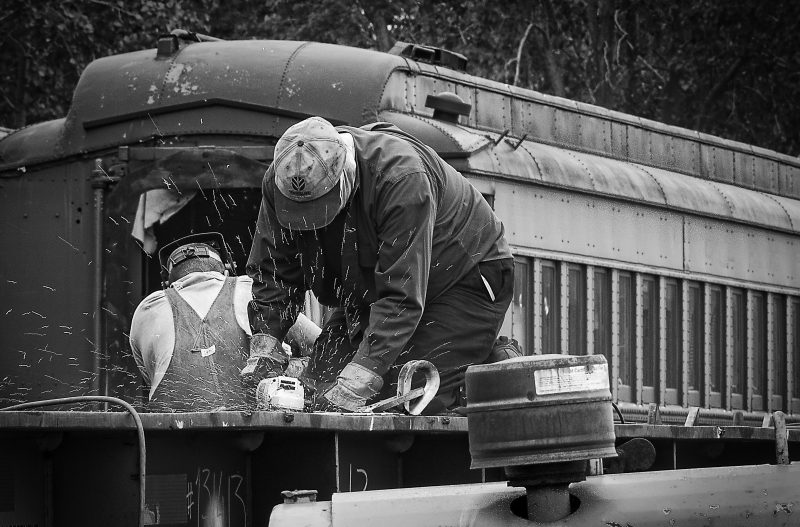
Maybe a photo of last year’s winning entry from Judith Khaner will help encourage your own ideas for a winning entry this year?
![]()
Notes on the 20% tax credit: when your project starts matters
As you know (especially if you took an active role in our recent advocacy push) the preservation community managed to save the 20% rehab tax credit when sweeping tax reform was passed last month. But what does that mean for rehab projects going forward? As we transition to a credit that pays out 4% of the credit per year for 5 years (once the building is placed in service), however, the bigger question may be, when do rules for the new credit go into effect?
If you’re planning to start a project, and were hoping to take advantage of the prior credit provisions, here are two important points to keep in mind: 1) you needed to be the building owner by December 31, 2017, and 2) you need to begin work (incurring expenses on the project) no later than 180 days after the legislation went into effect (prior to the end of June).
Of course, buying or leasing a property now automatically puts you into the new 20% tax credit rules, but if you were looking to start turning dirt on a project from 2017 or before, be aware that the clock is ticking.
![]()
The future of the 20% rehab tax credit: brighter than I thought
If you’re like me, you’ve probably got a favorite Oscar Wilde quote. One of his memorable thoughts that has stuck with me through the years is this one, defining a cynic as someone “who knows the price of everything and the value of nothing.” So today, I want to do just a little gentle revision to Wilde’s quote to read:
Beware the politician who knows the price of everything and the value of nothing.
And why am I picking on politicians as a group (and specifically our Congressional body)? Because the 20% rehab tax credit is on the chopping block, courtesy of those men and women in Congress.
Why? Not because it’s an overly onerous regulation (it’s a voluntary tax incentive), not because it’s a drain on the federal treasury (in fact, the latest NPS report on the credit states the credit has generated 29.8 billion dollars in federal tax revenue, against 25.2 billion dollars paid out, over the course of the credit’s existence), not because it’s a job killer (when $1,000,000 spent on rehab creates more jobs than $1,000,000 spent on new construction), and not because Republicans today are trying to do right by the legacy of Reagan (indeed, Reagan talks up the tax credit in a clip, jazzed up with some National Trust commentary, here). And not because new construction is such a boon to payroll tax receipts. The opposite is true, but you’d think keeping an incentive that boosts payroll tax, creates jobs, and does our collective heritage right would be a no-brainer.

The rehab tax credit? It’s a great program! I’m afraid we’ll have to kill it.
No, I think it’s on the chopping block because we, as regular citizens, need another reason to plant our collective face in our palms while we mutter about the utter lack of common sense in DC. When it comes to tax credits at the federal level, the fewer the better, whether or not they help inject serious capital into worthwhile redevelopment projects, whether or not they bring more net dollars into the treasury than they cost, whether or not they help save a bit of our collective history here and there. It’s enough to make me want to beat my head against a wall at the sheer lack of thoughtfulness, or careful evaluation to determine where tax credits actually make sense for the greater good, and to keep those tax credits in place, much like the administration and Congress have done with the affordable housing tax credit.
So, while I’d like to think that politicians can be brought back to reality, and that if enough people explain the benefits of an incentive program that they’ve obviously missed or glossed over, the 20% rehab tax credit will be inserted with haste back into the tax bill, my personal outlook on this happening is very gloomy. I’m guessing that the people in power made up their minds long ago on who wins and who loses in the incentives game, and no amount of good information is going to change the outcome.
I think we’re right, as preservationists. I think we’re on the right side, and we’re going to lose anyway. And that reality of the political process just ups my level of pessimism when it comes to politics, making me into that cynic that Wilde was warning you about.
Update 1/4/2018: So, we all know what happened: the 20% tax credit was not killed, but saved, in the tax reform legislation. Politicians went to work, the DC sausage machine cranked up, and in the end we got a new tax law. Sure, maybe we got tax credit links when we were expecting patties. And, maybe we were expecting five, and only got four, but we have our sausage, er, tax credit incentive, still intact, and still a very strong tool in our redevelopment toolbox. Now, it’s just up to the smartest preservationists in the room to figure out how to maximize the effectiveness of the tax credit going forward.
With that in mind, the National Trust has scheduled a “Now What?” webinar to give us an understanding of how the revamped tax credit will likely operate going forward, and whether we can all take a breather regarding tax advocacy (Hint: No). We hope to “see” you there!
Tuesday, January, 2pm EST
Free Webinar: Understanding the Historic Tax Credit Post Tax Reform
To register, visit: https://attendee.gotowebinar.com/register/7285418309228831490
On December 19th, 2017, Congress once again acknowledged historic preservation as a valuable economic development tool when it retained the 20% Historic Tax Credit in its tax bill. The credit’s retention is a significant accomplishment for preservationists, architects, contractors, mayors, Main Street organizations, developers, and property owners of historic buildings in towns across America.
Join this webinar to hear a recap of the bill’s provisions, the possible impacts of phasing on historic rehabilitation projects and the potential legislative vehicles that might be available in the remaining months of the 115th Congress to make changes.
![]()
Student Preservationist Conference Scholarship now accepting applications!
Thanks to the generosity of former Heritage Ohio Trustee Glenn Harper, we’re pleased to announce a scholarship to attend our annual conference in Columbus, October 16-18. The scholarship includes a full registration to attend the conference (including our Legacy Circle Reception on October 16), two nights lodging at the conference hotel, The Sheraton Columbus on Capitol Square, and a $100 travel stipend.
To be eligible to apply for the scholarship you need to be currently enrolled in a degree program, a resident of Ohio, and under the age of 40 as of October 16.
If you would like to join us, please complete the scholarship application no later than Friday, September 1. We’ll announce the winner of the scholarship Friday, September 8.
Please contact Frank Quinn at 614.258.6200, or at fquinn@heritageohio.org with any questions you have about the application. Good luck!
You can access the scholarship application below.
![]()
Wright-Patt Air Force Base Public Meeting Announcement: June 27 & 28
Public Hearing Announcement
Public Hearings
Wright-Patterson Air Force Base
88th Air Base Wing
Holding Public Hearings on the Housing Program
Draft Environmental Impact Statement
The United States Air Force (Air Force) invites the public to attend public hearings on the Draft Environmental Impact Statement (DEIS) for the Wright-Patterson Air Force Base (WPAFB) Housing Program.
The Air Force will hold two public hearings to present the findings of the Draft EIS and to solicit input from the public. The Air Force proposes to build new or renovate, privatize, lease, or demolish its current government-owned housing units to support housing needs for WPAFB’s 30 key and essential personnel that meets Air Force housing standards. Eighty-nine Brick Quarters Historic District homes built in 1934-1937, Foulois House built in 1874, and ten homes on Yount Drive built in 1975 are included in the Housing Program effort.
The public hearings will be held on 27 June 2017 and 28 June 2017, at the Fairborn High School Media Center, 900 East Dayton Yellow Springs Road, Fairborn, OH 45324. An open house will begin at 5:30 p.m. and the meeting will begin at 6:30 p.m. and end at 8:30 p.m.
The public is encouraged to offer comments and input on the Draft EIS which is available for download and review at http://wpafbhousingeis.versar.com. Comments made during the public hearing will be considered in preparation of the Final EIS. Written comments may be made at the meetings, and meeting attendees can offer comments verbally by turning in a speaker request card at the meeting. Additionally, written comments will be accepted by mail or e-mail through July 17, 2017.
For more information, to request handicap assistance or translation services at the meetings, or to submit comments, please contact:
Theodore Theopolos
88th Air Base Wing Public Affairs Office
5135 Pearson Road, Building 10, Room 253A, Wright-Patterson AFB, Ohio 45433
Phone: 937-522- 3252; E-mail 88abw.pa@us.af.mil;
or the project website located at: http://wpafbhousingeis.versar.com
![]()
2017 Heritage Ohio Annual Awards Call For Nominations
What is the awards nomination process?
To nominate a a person, building, or project, simply complete this form and attach supporting documents and high-resolution photos (Limit 9.75 MB). If your documents or photos are large files, please email them to fquinn@heritageohio.org with the name of the nomination in the title of the email. To view a detailed description of the awards categories, view the 2017 Awards List.
All nominations must be received by July 17, 2017. Nominations that do not follow the formatting provided in the form and incomplete entries will NOT be accepted.
Not sure if your nomination fits a category? Contact us at 614-258-6200 or fquinn@heritageohio.org and we will be happy to discuss the nomination with you.
Where will the awards ceremony be held?
The 2017 Heritage Ohio Annual Awards Ceremony will take place on October 17, 2017 at the Statehouse Atrium. Tickets to the conference will go on sale in June of 2017.
Here’s a sampling of 2016 Annual Awards winners:
 Best Main Street Committee Project or Event –
Best Main Street Committee Project or Event –
Main Street Kent Art & Wine Festival
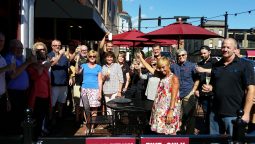 Best Downtown Placemaking –
Best Downtown Placemaking –
Mulberry Street Sidewalk Cafe
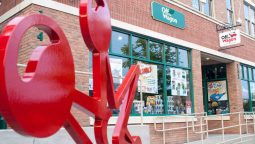 Main Street Business of the Year –
Main Street Business of the Year –
Off the Wagon Shop in Kent
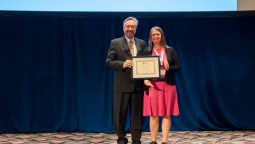 Main Street Manager of the Year –
Main Street Manager of the Year –
Heather Malarcik
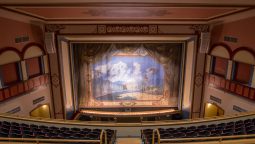 Historic Theater of the Year –
Historic Theater of the Year –
Peoples Bank Theatre in Marietta
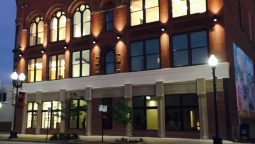 Best Public Building Rehabilitation –
Best Public Building Rehabilitation –
The Columbian Building in Lancaster
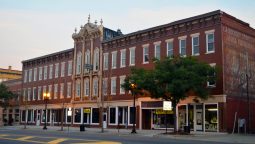 Best Public Private Partnership –
Best Public Private Partnership –
The Phoenix Block in Ravenna
 Best Residential Rehabilitation –
Best Residential Rehabilitation –
530 South Court Street in Medina
 Best Commercial Rehabilitation – Small Community
Best Commercial Rehabilitation – Small Community
The Carlisle Building in Chillicothe
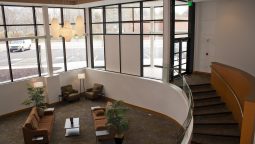 Best Commercial Rehabilitation – Large Community
Best Commercial Rehabilitation – Large Community
Goodyear Hall in Akron
 Best Public Leader in Revitalization Award
Best Public Leader in Revitalization Award
Kimberly Marshall – City of Medina
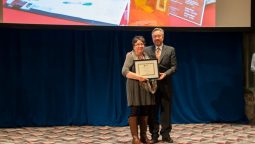 Spirit of Main Street Award
Spirit of Main Street Award
Linda Shearer of Main Street Delaware
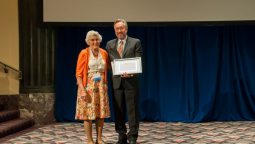 Preservation Hero Award
Preservation Hero Award
Martha Boice
![]()
And the Preservation Month Photo Contest Winner is…
Update 5/16: With a total of 1,057 votes, by far our most votes ever, congratulations go to Carl E Feather, the winner of the 2016 Preservation Month Photo Contest! Carl’s entry, Night Train Approaching Ashtabula, garnered 464 votes. We’ll be seeing his winning image on a future cover of Revitalize Ohio. Congratulations also to Judith Khaner who won our Peoples’ Choice Award at the Old House Fair in Medina last weekend.
Thanks to everyone who submitted an entry for our 2016 Photo Contest, and to everyone who voted!
Carl E Feather, with his “Night Train Approaching Ashtabula” entry:
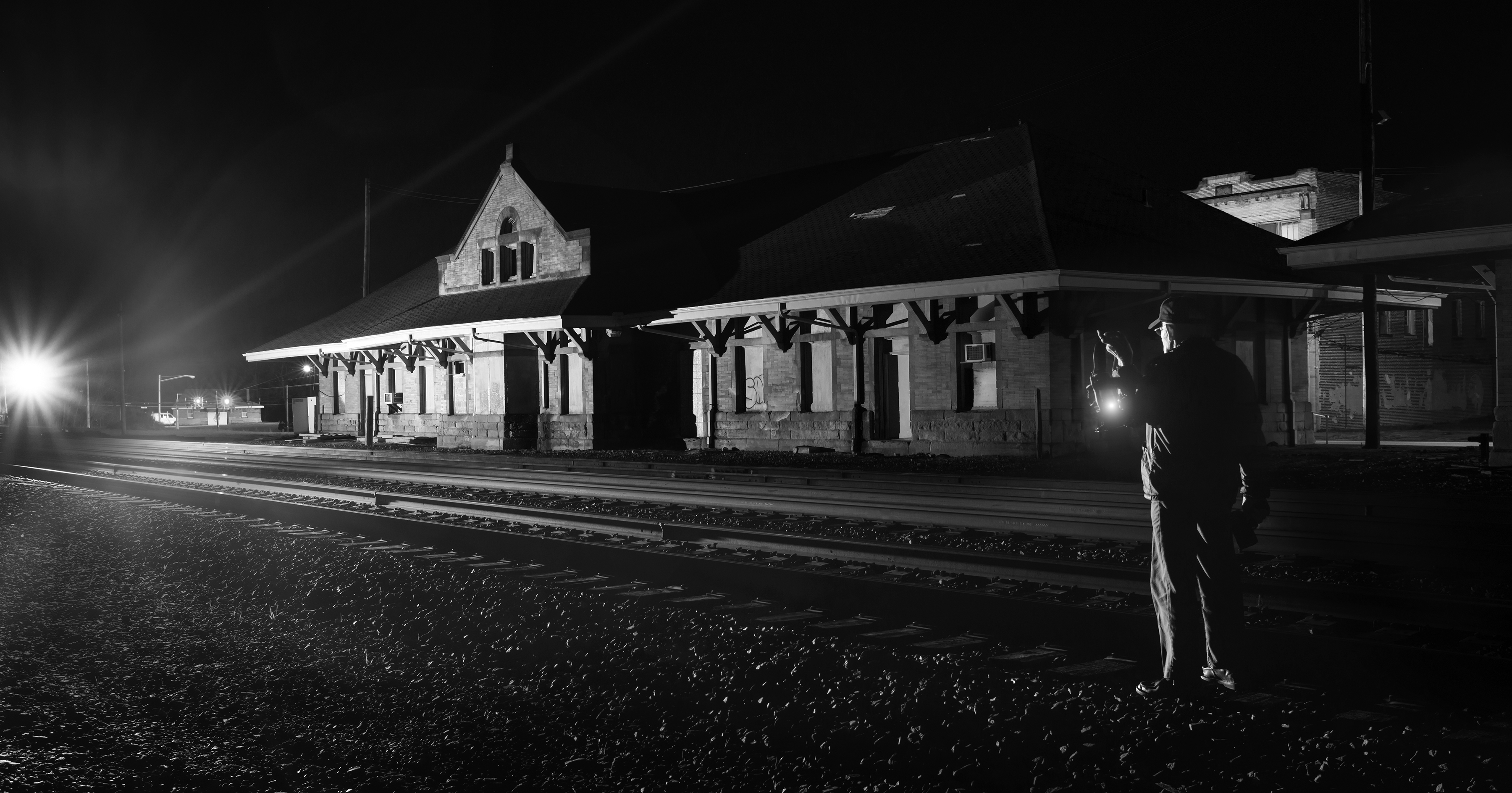
![]()
Old House Fair Q&A
Old House Fair Q&A: Everything you need to know about our second annual Old House Fair.
We’re excited to bring you the second annual Old House Fair, taking place on Saturday, May 7, in historic downtown Medina, Ohio. If you have questions about the Old House Fair then we’re here to provide the answers.
Where is the Old House Fair taking place?
The Old House Fair is happening right downtown, with sessions and events on Medina’s historic Square, and an additional track of sessions at the Medina County District Library. The library address is 210 South Broadway, and it’s located adjacent to the southeast corner of the Square.
What’s happening at the Old House Fair and where can I see the agenda?
Over the course of Saturday, beginning at 9:30 am with opening comments from Bernice Radle, we’ll have information and demonstration sessions, a variety old house vendors under the big tent, and a host of additional activities. You can view the full Old House Fair agenda here.
What else is happening?
We have a special reception for Bernice Radle on Friday, beginning at 6 pm, at Root Candles. Network with your fellow Old House Fairgoers, meet Bernice Radle, and check out Root’s wonderful candle selection. Tickets are just $25 per person, and each attendee receives a complimentary candle, and a 40% discount on any purchases at Root Candles! You can purchase your tickets here.
The Old House Fair Olympics are back and better, beginning at 1 pm. Here’s your chance to test your old house IQ and tool skills in a friendly competition with your fellow fairgoers. To the victors will go the coveted “Golden Hammer!”
New this year, we’ll have the Preservation Month Photo Contest Peoples’ Choice Cash Award. Our 2016 finalist images will be on display Saturday, and we’ll have in-person voting. You can vote by putting a dollar or two toward your favorite image, and the finalist image that receives the most votes (dollars) during voting wins their “votes.”
For the kids coming to the Old House Fair, we’ll have a mini-barn raising happening right on the Square beginning at 10 am. Paul Knoebel, a charter member of Friends of Ohio Barns, will direct the barn raising process. In the process, the children will learn about the traditional craft of timber framing, and how the barn fits together with large posts and beams, securing the frame with just wooden pegs. Children under 13 can attend the Old House Fair free of charge with a parent’s paid ticket to attend.
Finally, the Medina Town Hall & Engine House Museum located at 50 Public Square will be open 11 am-2 pm on Saturday. A great local history museum, stop in to learn more about the story of Medina and what makes this community unique.
How much are tickets and where do I purchase them?
Tickets are just $10 to attend and available for purchase here. Children under 13 can attend for free with a parent’s paid ticket.
Where do I park?
Medina has plenty of free parking around the Square. Check out this map with parking lots noted here.
What about restrooms?
Medina has a public restroom facility, including a family restroom, located on the northwest corner of the Square, which will be accessible during the Old House Fair.
What food options do we have around the Square?
Medina offers a veritable cornucopia of dining options ringing the Square, so grab a bite to eat at noon, and we’ll see you back for the afternoon sessions. Check out dining options here.
We love our sponsors and vendors and hope you do too!
The Old House Fair wouldn’t be possible without the support of our major Old House Fair sponsors, Benjamin Moore Paints and The Painted House & More, and the City of Medina, and our local partners Main Street Medina. And thanks to our vendors: Community Action Wayne/Medina, Medina Community Design Committee, Progress Through Preservation, Total Home Inspection Services, Ursuline College Historic Preservation Program, and Young Ohio Preservationists.
We hope we’ve answered your questions, but feel free to use the Comments below to ask your question and we’ll get you an answer. See you at the Old House Fair!
![]()
Join us for a pre-Old House Fair reception with Bernice on Friday, May 6!
This year we’re kicking off the Old House Fair festivities with a special reception with Bernice Radle on Friday evening, May 6, at Root Candles, beginning at 6:00pm. Tickets to attend are only $25 per person, and can be purchased here.
![]()

